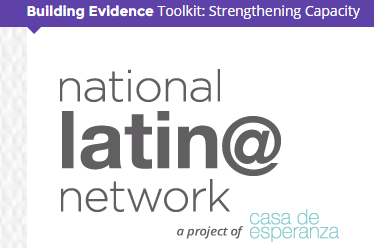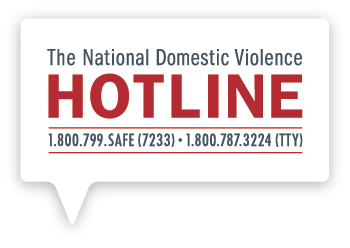By Nicole Greene, Acting Director, Office on Women’s Health
*Originally published on the Women’s Health blog on September 27, 2017″

Content Warning: Sexual Assault
One in five undergraduate women (PDF – 282 KB) are sexually assaulted during college. When I think about that number, I want to change it so everyone is safe. This National Campus Safety Awareness Month, I encourage you to support the theme “Take the First Step” and work to create a safe campus.
The Office on Women’s Health is committed to preventing sexual assault on college and university campuses. That’s why we launched the College Sexual Assault Policy and Prevention Initiative. This initiative provides technical assistance and support for implementing sexual assault policies and prevention strategies on college campuses.
At just a year into the initiative, we’re encouraged by the programs being implemented around the country. Schools are conducting bystander intervention trainings that are focused on fraternity and sorority advisors. Others are offering awareness and prevention video resources. Some have been conducting trainings on trauma-informed responses for their staff and incorporating messages about consent and bystander intervention into fall festivals.
I’m personally excited about these programs and prevention activities because they address this issue from multiple angles: awareness, prevention, intervention, and response. Demonstrating to students that their schools are aware of this issue and care enough to provide these activities and resources is a huge step in the right direction. So, what else can we do to help prevent sexual assault?
What Communities Can Do
Education about sexual assault and consent begins long before college, in the messages children receive from their parents and other adults. We can plant the seed of consent and respect in children from an early age with this simple lesson: People should not touch each other without asking first. As children grow, the messages grow with them. We also all have a role in modeling respectful and consensual interactions, both sexual and nonsexual. In addition, community members should pay attention to their local and state policies and legislation, and they should advocate for positive change in support of sexual violence prevention efforts and effective reporting and supportive services for survivors.
What Colleges Can Do
Administrators, faculty, staff, and coaches must work with students to implement comprehensive prevention programs. Schools should consider teaching consent and healthy relationship/communication skills throughout the academic year, institute stricter intolerance policies on assault, and make it clear that sexual assault has no place in higher education.
What Students Can Do
Students have a large role in preventing sexual assault of others, too. If they see someone at risk for assault, they can help prevent it by using the C.A.R.E. bystander intervention technique: Create a distraction, Ask the person directly, Refer to an authority like a resident assistant or security guard, and Enlist others’ help.
Every person on campus has a role to play in eradicating sexual assault from universities and colleges. When your sons and daughters go off to college, remind them what respecting themselves and others looks like. After that, it’s up to them to make the right choices and for the colleges to support them.
This National Campus Safety Awareness Month, I encourage students, administrators, faculty, and coaches to take the first steps together to prevent sexual assault. For more info on preventing sexual assault, visit Sexual Violence on Campus: Strategies for Prevention (PDF – 3.5 MB) and STOP SV (PDF – 2.85 MB).

Nicole Greene serves as Deputy Director for the U.S. Department of Health and Human Services’ Office on Women’s Health (OWH) and acts as the primary advisor to the Deputy Assistant Secretary for Health — Women’s Health. A former Council for Excellence in Government Fellow and a graduate of the prestigious Leadership for a Democratic Society program through the Federal Executive Institute, Ms. Greene leads change management in the office. One of her first projects at OWH was to lead the restructuring of OWH, improving the efficiency and effectiveness by aligning the mission of the Office so it can better serve American women and girls. Read more here.




 Rebecca Rodriguez, Ph.D. (email:
Rebecca Rodriguez, Ph.D. (email:  Martha Hernandez-Martinez, MPA (email:
Martha Hernandez-Martinez, MPA (email:  Josephine V. Serrata, Ph.D. (email:
Josephine V. Serrata, Ph.D. (email: 
 Katie Ray-Jones is the chief executive officer of the National Domestic Violence Hotline (The Hotline). She is a recognized leader in the domestic violence movement and has extensive experience working with victims and survivors. Ray-Jones has managed emergency shelter and housing programs as well as nonresidential services for survivors and their children. Prior to being named CEO of The Hotline, she served as operations director and then president of the organization. She serves as treasurer on the board of directors for the National Resource Center on Domestic Violence and is a member of the National Task Force to End Domestic and Sexual Violence.
Katie Ray-Jones is the chief executive officer of the National Domestic Violence Hotline (The Hotline). She is a recognized leader in the domestic violence movement and has extensive experience working with victims and survivors. Ray-Jones has managed emergency shelter and housing programs as well as nonresidential services for survivors and their children. Prior to being named CEO of The Hotline, she served as operations director and then president of the organization. She serves as treasurer on the board of directors for the National Resource Center on Domestic Violence and is a member of the National Task Force to End Domestic and Sexual Violence.

 Grace S. Mattern was Executive Director of the New Hampshire Coalition Against Domestic and Sexual Violence for 30 years. She has been actively involved with public policy and systems advocacy to promote effective community interventions in response to domestic and sexual violence and coordinated a statewide network of programs that assist victims of domestic violence, sexual assault and stalking. She served on the Governor’s Commission on Domestic and Sexual Violence, Chairing the Research Committee. She has also served on the Attorney General’s Task Force on Child Abuse and Neglect, the Domestic Violence Fatality Review Committee, the National Greenbook Policy Advisory Council, and on numerous Boards of Directors, including the National Network to End Domestic Violence, the NH Network of Child Advocacy Centers and the NH Coalition to End Homelessness. She is currently the Vice-President of the Board of Directors of the NH Center for Nonprofits and is a member of the Advisory Board of the National Sexual Violence Resource Center.
Grace S. Mattern was Executive Director of the New Hampshire Coalition Against Domestic and Sexual Violence for 30 years. She has been actively involved with public policy and systems advocacy to promote effective community interventions in response to domestic and sexual violence and coordinated a statewide network of programs that assist victims of domestic violence, sexual assault and stalking. She served on the Governor’s Commission on Domestic and Sexual Violence, Chairing the Research Committee. She has also served on the Attorney General’s Task Force on Child Abuse and Neglect, the Domestic Violence Fatality Review Committee, the National Greenbook Policy Advisory Council, and on numerous Boards of Directors, including the National Network to End Domestic Violence, the NH Network of Child Advocacy Centers and the NH Coalition to End Homelessness. She is currently the Vice-President of the Board of Directors of the NH Center for Nonprofits and is a member of the Advisory Board of the National Sexual Violence Resource Center.


 LB Klein, MSW is a Consultant and Lead Trainer for Prevention Innovations Research Center at the University of New Hampshire. In that role, she builds the capacity of institutions of higher education and communities to implement the Bringing in the Bystander Program. She is based in Atlanta, GA
LB Klein, MSW is a Consultant and Lead Trainer for Prevention Innovations Research Center at the University of New Hampshire. In that role, she builds the capacity of institutions of higher education and communities to implement the Bringing in the Bystander Program. She is based in Atlanta, GA 
 Sharyn J. Potter, Ph.D., MPH, is a founder and Co-director of Prevention Innovations Research Center: Ending Sexual and Relationship Violence and Stalking at the University of New Hampshire and is an associate professor in the Department of Sociology.
Sharyn J. Potter, Ph.D., MPH, is a founder and Co-director of Prevention Innovations Research Center: Ending Sexual and Relationship Violence and Stalking at the University of New Hampshire and is an associate professor in the Department of Sociology. Jane Stapleton, M.A., is a founder and Co-director of Prevention Innovations Research Center: Ending Sexual and Relationship Violence and Stalking at the University of New Hampshire.
Jane Stapleton, M.A., is a founder and Co-director of Prevention Innovations Research Center: Ending Sexual and Relationship Violence and Stalking at the University of New Hampshire.